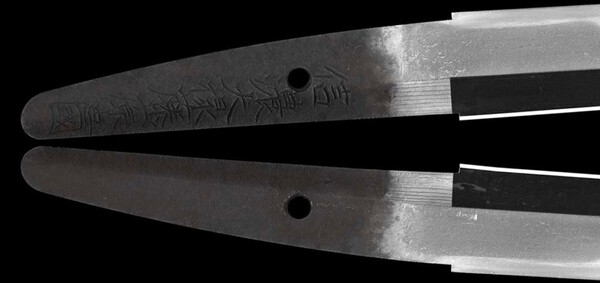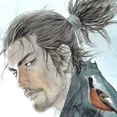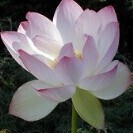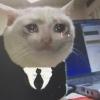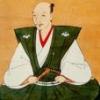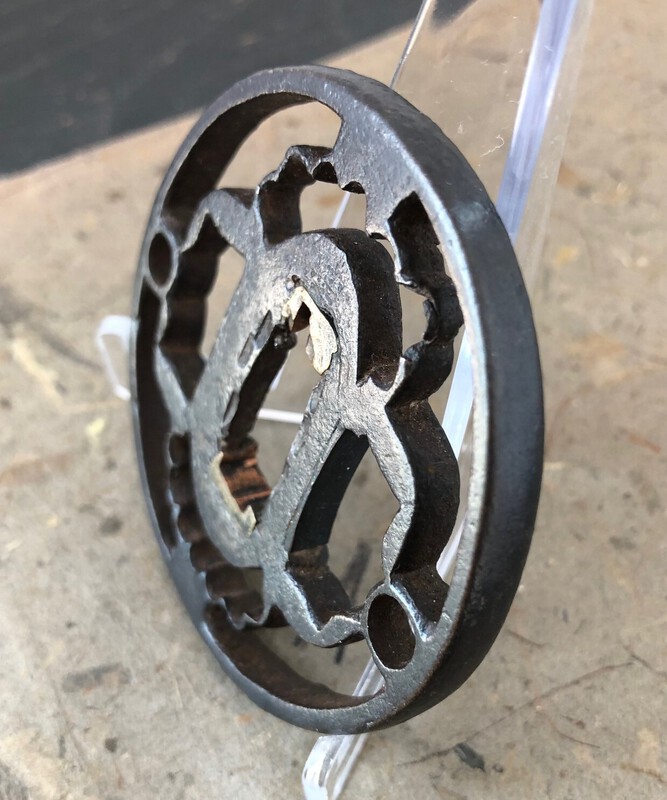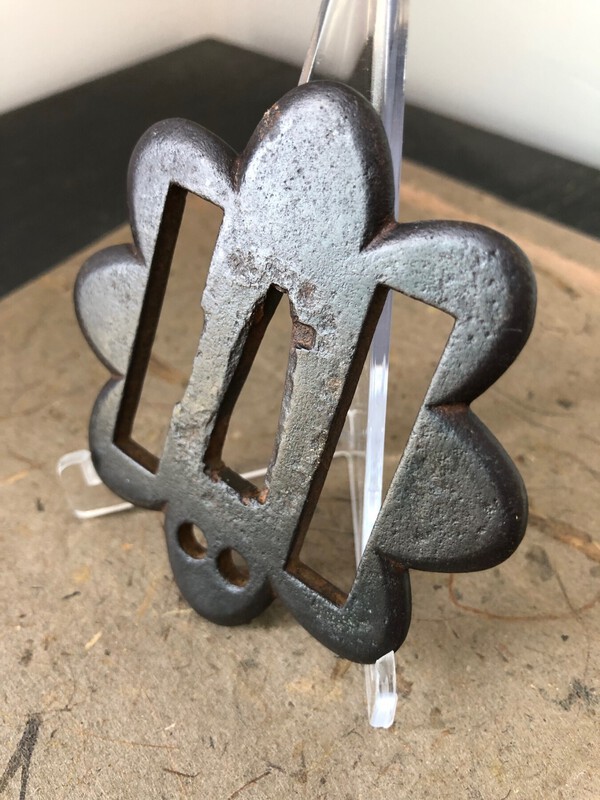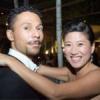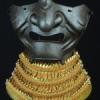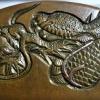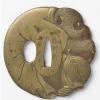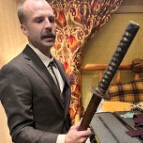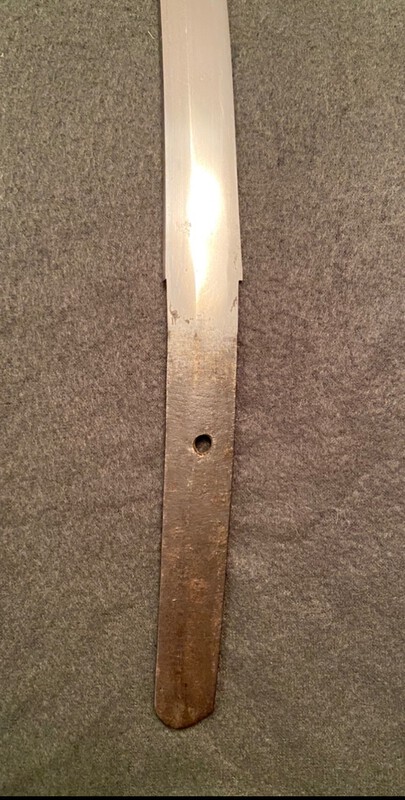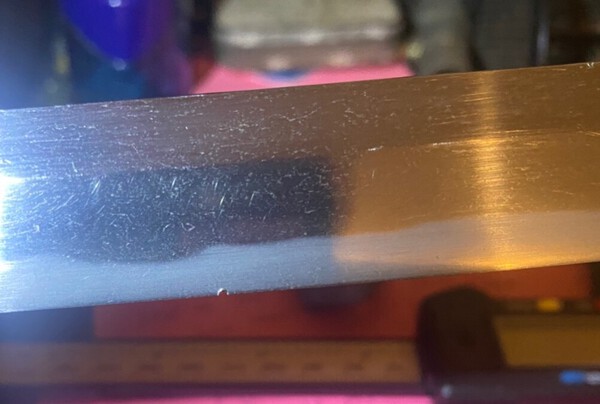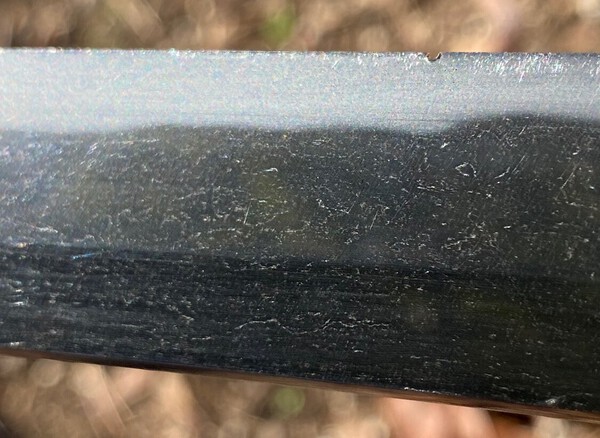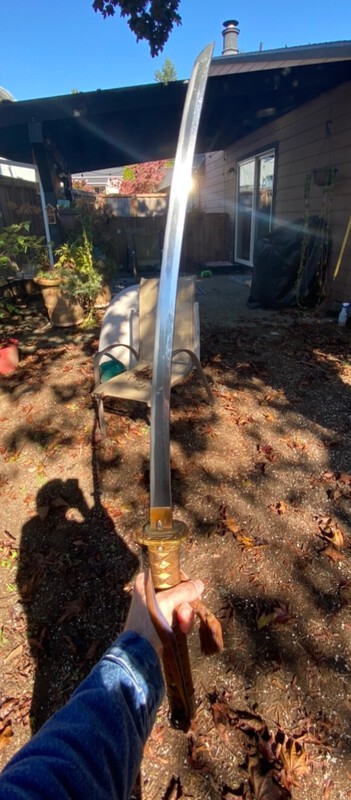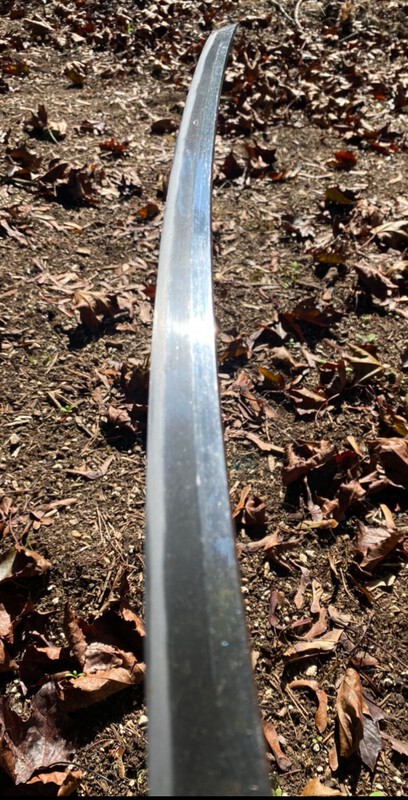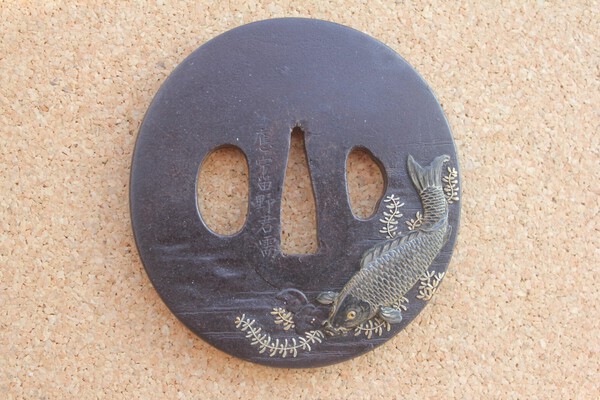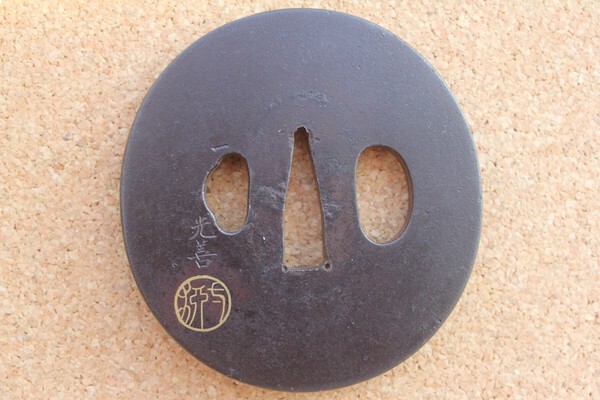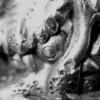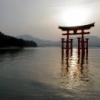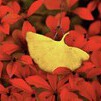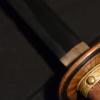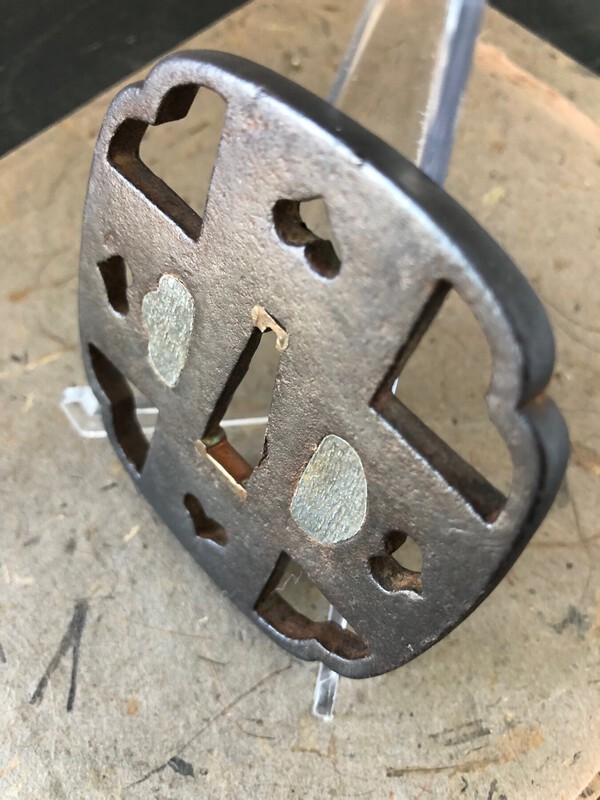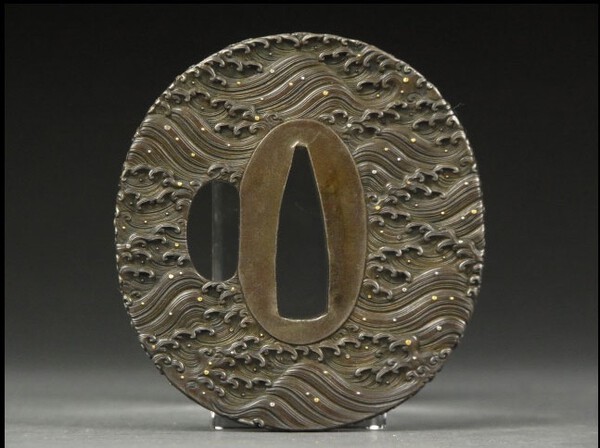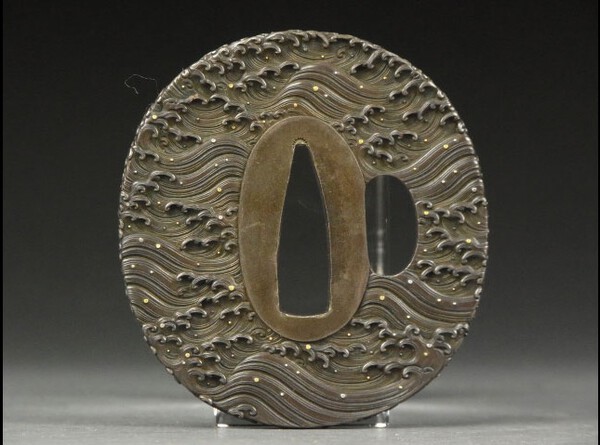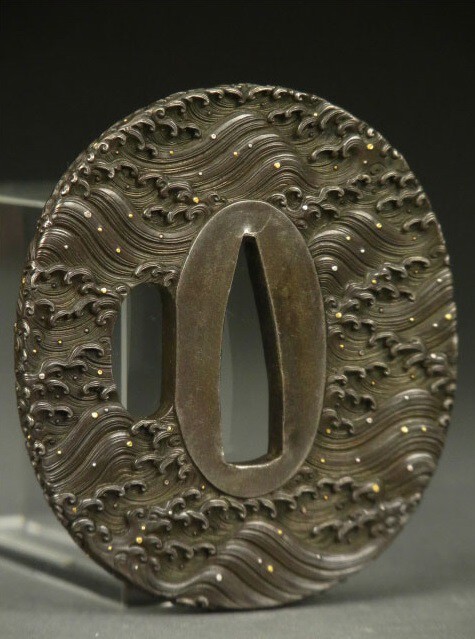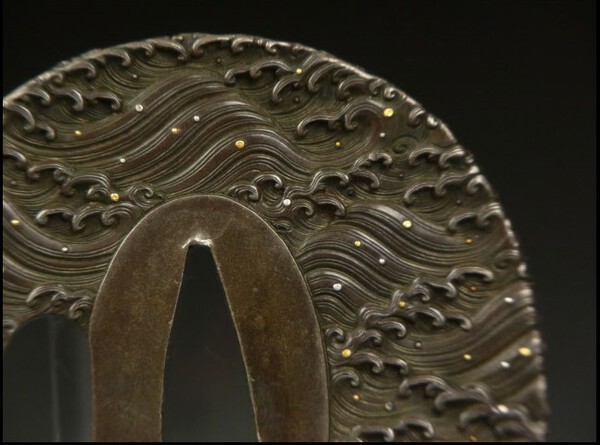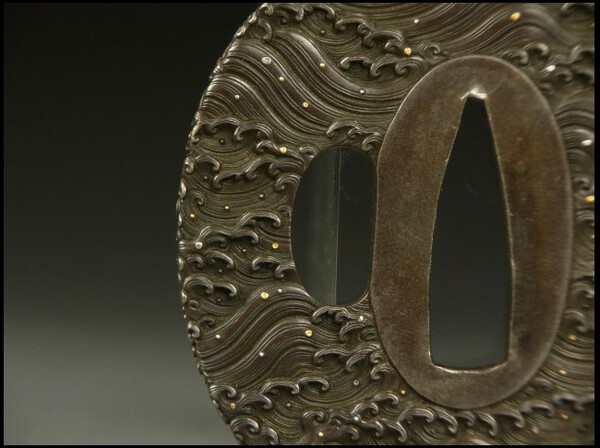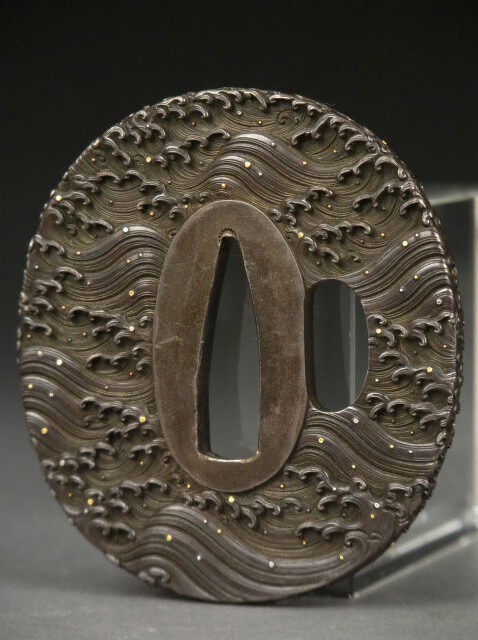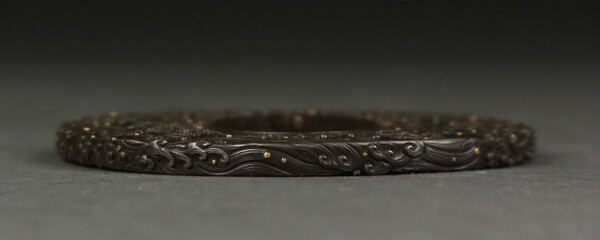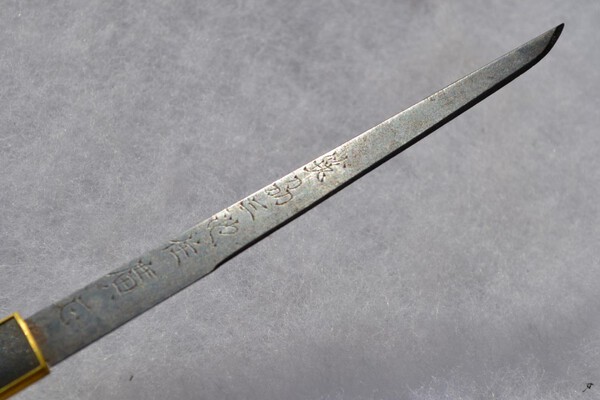Leaderboard
Popular Content
Showing content with the highest reputation on 10/10/2023 in all areas
-
8 points
-
Hello everyone ! Just wanted to share with you a project we are working on from Japan. A 80cm blade Tachi with a Koshirae for one of our customer who wants to practice tameshigiri. The customer gave us a lot of freedom on the details and style so it will be very satisfying to make realise this project. The Tachi will have a long leather handle, silver heavy tsuba and silver fittings. Can't wait to share with you guys more on this sword and show you pictures when the sword is finished ! We're also currently working on an even more crazy project that might have never been done before, let me know if you're interested to see.4 points
-
3 points
-
Item 314 - the Ichiryu Mitsuyoshi Carp Tsuba - what a great tsuba for your first! The ebay aspect adds so much to the treasure hunt beginning of your collecting experiences. So many of us bought fake replicas swords or tourist tsuba as our first acquisition and thought that they were treasures (until we learned better). In your case, you got a very nice tsuba that was a commission piece for someone close and highly regarded. Not only is it a beautiful tsuba with excellent workmanship, it has also been mounted and carried on a sword. The artist is Ichiryu Mitsuyoshi (early 1800’s Haynes 05566 & 05562). The commission is for a Uruno-kun. “Kun” is an honorific like “San” that you use at the end of someone’s name; however, “Kun” is more informal and is common among friends (usually by the senior to the junior). Therefore, we can see that Mitsuyoshi probably made this for a good friend. Haynes says that Mitsuyoshi is from Mito in Hitachi and interestingly, the name “Uruno” is a name that derived from the Mito area of Japan. When signing the tsuba on the back side, Mitsuyoshi has had some fun! Notice the “-“ mark above the kogai hitsu-ana. It is the kanji “Ichi” - the first part of his School/Family name of “Ichiryu". In the “in-mei” (gold seal under his mei on the back side), Mitsuyoshi has written two characters that mean willow tree and are pronounced "ryu” like the second part of his School/Family name “Ichi-ryu”) and the character “Yo” (meaning “presented”). So if you take the (1) “Ichi” above the kogai hitsu-ana, (2) the “Ryu” and “Yo” in the in-mei gold seal, (3) his mei, and (4) the dedication to Uruno-Kun on the front, THEN it means: Ichiryu Mitsuyoshi presented this to his good friend Uruno-kun.3 points
-
Cheers Alex, I also got an extra 20,000 yen off the price as well as free postage..so very happy all in all, a bargain if you can call any Nihonto that. With it being papered Tokubetsu Hozon I have high expectations…I also really liked the Hamon.2 points
-
Congratulations, a signed and dated ubu Muromachi period sword makes it quite collectible (with tasteful koshirae to boot). I see no immediate flags here. Do wonder if this is an Uchigatana? What are the dimensions? Should you decide to have this sword polished at some point, do choose an excellent polisher. Regards,2 points
-
The blade is signed Bishu Osafune Tadamitsu the rabbit on the Fuchi Kashira could be the white rabbit of Inaba jumping over the waves. I can’t see much of the blade but with the Signature and size I would say it is from late Muromachi period. Edit: just saw the Date, I think it is Bunmei 3 the 2nd month = February 14712 points
-
Fans of good early iron should appreciate these two tsuba being offered. Tsuba #1 is a Momoyama Period Owari guard of smaller dimensions (6.8cm x 6.7cm x 4mm) but which features excellent iron, as is characteristic of early Owari work. Subtle tekkotsu complements strong hammerwork. The color of the iron is beautiful, as is the fine patina the tsuba boasts. The motif is a little hard (for me) to identify. The pairs of birds at the top and bottom of the design are often described as wild geese (karigane), but the elements at the left and right represent subjects I am not sure of. The asymmetrical arrangement of these elements creates a sort of "wobble" that was highly appreciated in and mostly peculiar to Momoyama sensibilities. Edo Period Owari works are usually more "perfect" in the symmetry of their designs. This sword guard is centered by a strong, confident seppa-dai, and the nakago-ana is bordered north and south with what appears to be lead sekigane. The price is as low as it is only because of the smaller-than-usual size. $475 plus shipping. Tsuba #2 is a Momoyama Period Kanayama tsuba. The dimensions are 6.4cm x 6.5cm x 5.5/6mm. Such smaller dimensions are the norm for Kanayama works. As is also the norm for Momoyama Kanayama designs, the presentation of the motif is abstracted enough to become difficult to decipher for sure. It is a bold, strong design, however, enhanced by numerous blister-like tekkotsu on the very wide-for-its size rim. This tsuba, too, has a beautiful deep color, and a soft, natural patina. A soft-metal (yamagane/copper) glide has been inserted for the kozuka-ana. This piece exudes the archaic sensibilities expressed so notably in Momoyama Period Kanayama sword guards. Recommended for any Kanayama enthusiasts out there. $950.1 point
-
Offered today are a pair of iron tsuba, both of which have Higo characteristics, and more specifically hint at being from the hand of Hirata Hikozo. It must be remembered that, while he is referred to as a Higo tsubako, Hirata Hikozo lived and worked in Higo province for only some three years, from 1632 to 1635, when he died. So, however long he lived, he spent relatively little time in Higo. His connection to Hosokawa Sansai (the Higo daimyo from 1632 to 1645), however, extends back well earlier than this; it was Sansai who brought Hikozo with him to Higo when he became the daimyo there in 1632. The degree to which Hikozo brought his designs with him to Higo may never be known, but these two tsuba may be examples of his earlier work in iron. Hikozo is much more well known for his incredible works in soft metal, but he is known to have created some pieces in iron; in fact, the only known signed Hikozo tsuba is iron. Tsuba #1: This is an eight-lobed sword guard measuring 8cm x 7.6cm x 4mm at the nakago-ana and 2.5mm at the rim. The nakago-ana on this piece is very large, indicating that it was fitted to a quite a sizable katana. Two extended rectangular sukashi are adjacent to the nakago-ana, and two udenuki-ana are present below it. The lobes are scalloped along the edges to create a beautifully modeled effect. The condition of this tsuba is excellent. There is a small notch cut out of one of the rectangles to accomodate a kuzuka. If this is in fact an early Hikozo work, it is quite the bargain. $650 plus shipping.1 point
-
Could anyone help me please with the significance (if any) of this kozuka? It appears to be a tethered hawk on a perch atop a decorated stand above a recumbent ferocious-looking shishi. The lengthy tether has many loops and tassels at the end. I thought it was an eagle at first - but a little research revealed that hawking/falconry was popular with samurai in Japan and are often depicted on a perch with a tether in paintings and prints. The hawk was considered a symbol of endurance and status, while the shishi, of course, is a symbol of strength, courage and protection. I couldn't find anything relating to a shishi being depicted with a hawk and whether the end of the stand actually is thrust into the shishi is hard to decide. It may simply be two favourite symbols used together to signify that the kozuka belonged to a brave elite samurai! I think the metal is perhaps sentoku or shinchu and there are copper highlights on the hawk, shishi, decoration and cords. If anyone has any ideas I'd be pleased to hear them. Thanks and regards David1 point
-
1 point
-
This samurai is holding a lantern. According to the mon(s) depicted on his trousers, it can be one of the 47 ronins (chusingura).....!1 point
-
Recognised that sword by the time i got to the 3rd pic. Congrats, was a good deal for TH.1 point
-
1 point
-
Unfortunately gimei. https://www.aoijapan.com/wakizashi bishu-osafune-tadamitsu(hikobei/1 point
-
Bob, how fortunate you are. Its quite wonderful to see a sword come out of the woodwork unmolested. I have very much enjoyed seeing your sword and for any advice you are in the best hands here on NMB. BaZZa. Melbourne, Australia.1 point
-
濃州関住人源天秀謹而鍛之 = Nōshū Seki jūnin Minamoto Amahide kinshite kitau kore. 而 is offset to the right. The characters at the bottom of the tang are 金丸 Kanamaru. See the link below. Arsenal Stamps. @mecox1 point
-
I recently acquired this blade in Type 98 Gunto koshirae. Seems to be out of polish but in decent condition, the tsuka has some damage. The previous menuki had been nearly pulverized, so I replaced it with a section of chopstick for the short-term. I also added the tassel. Otherwise this is as-found Shinogi Zukuri Mumei Hamon: Notare Sori: Torisori Mune: Iorimune file marks: Kiri? nakagojiri: kurijiri boshi: notare komi? Nagasa: 60.3cm (23.74 in) total length: 75.5cm (29.7 in) sori: 2cm (0.787 in) Motohaba: 28.5mm Sakihaba: 20mm motokasane: 6.3mm sakikasane: 4.7mm Kissaki: 31.9mm I’ve got a low budget, and a thing for mumei over gimei. I enjoy the more dramatic Sori than my other swords. I also love the ww2 koshirae, and have always wanted a sword in gunto fittings. I believe the blade to be suriage and probably koto. trying to get good shots of the hada but it’s hard to see and my photography skills and equipment are still greatly lacking. Sharing for opinions, and discussion - to learn what I can from my new sword. I would love a closer estimate on its possible age Also, the sarute is a fairly simple metal band. Could I hypothetically purchase a more decorative gunto sarute and replace it? Or is that probably not worth it? more photos in additional comments* Thanks for reading, Cheers, -Sam1 point
-
First got my hands on my first nihonto, all thanks to Nick over at Nihontoart.com. Nick is a definitely trustworthy seller who answered all of my questions. He was quick with sending my item and even gave me a cleaning kit for free. I haven’t had the chance to take good photos of my Odachi but here is the link to it. https://nihontoart.c...original-edo-mounts/ it is definitely an amazing feeling to get my first nihonto.1 point
-
1 point
-
Item No 314 Iron Tsuba with shibuichi, shakudo and gold 7.50 cm x 7.10 cm x 0.50 cm Subject of Carp swimming through water weeds by Mitsuyoshi from Ichryu school ( Mito ). This was a commission piece - specially made for a gentleman, Uruno-san. A superb rendition of the subject made with the extra care and attention to detail reserved for a special piece. Although it may not be regarded as the best fitting in the collection, it is my personal favourite. Indeed it was the very first item I purchased when starting out on the collecting journey - no doubt a contributing factor to my feelings. I have some ebay paperwork showing that I bought the Tsuba on the 12th Feb. 2002, which neatly shows when my fascination with the subject and artwork turned towards acquisition. Is that a blessing or a curse I wonder ?1 point
-
Eckhard Kremers (former student of Sasano) has just published a new book on sukashi tsuba that reflects his research of the past 30 years on the subject It is available from Lulu in either English or German: https://www.lulu.com...t_audience_rating=00 A Study About Sukashi Tsuba From Kyoto – Their Development From The Muromachi To The Early Edo Period – The Workshop of Kariganeya Hikobei in Kyoto and his Move to Edo – The founding of the Akasaka Workshop Paul1 point
-
1 point
-
Hi Everyone and thank you for the very kind feedback! Lovely to hear the effort is being appreciated @Brian We can gladly do so, I will PM you a link.1 point
-
Happy to host the file here if you want it more widely distributed Marco.1 point
-
Marco just distributed his Newsletter/Catalogue this morning. It is really outstanding - some of the best tosogu photos that I've ever seen and very interesting analysis. Just what we needed in the tosogu community. Great job Marco!1 point
-
I think it's also worth considering that some of the late examples from a swordsmith career may be lacking in power and quality compared with earlier works. Achieving mukansa is not end all be all plateau as far as quality, and I can think of one mukansa smith who received the designation late in life, and where some of his earlier pre-title swords are what I would consider his best work ( or at least where my personal favorites from the examples that I studied).1 point
-
By that logic and just for discussion sake, I would think the answer is some yes and some no. There would be a progression in skill leading up to the point where he was designated and some of those pre-title swords maybe at the early stages of that progression.1 point
-
Not to disagree or be disagreeable… just for discussion. Wouldn’t earlier (pre-title) blades by a Mukansa level smith be at a level that ‘proved’ they were worthy of their title? I know it is splitting hairs, and it is something collector’s love to do , but wouldn’t the blade be Mukansa level before the smith is?1 point
-
I was praying no one else bid on them. God must exist😂. I plan on making a nice post with nice photos with my proper lighting set up when it arrives. I also own a child's toy saber which is discussed a bit in Dawsons? Maybe Plimptons, book. I plan to get nice side by sides with those. The quality difference is amazing. I hope to find more child's day swords of the quality of thhis one.1 point
-
鋤残土手金泥塗耳 Sukinokoshi, dote kindei-nuri mimi Kindei is a kind of adhesive with gold powder in it. I think a lot of people say "kin-doro-nuri", especially online, but I think "kindei" is correct. I will have to defer to the experts to clarify the technique of sukinokoshi. I think sukinokoshi is where the metal is scraped (carved) away from a design (or, in this case, the edge) leaving the design in a raised relief. In your tsuba it would be a dote mimi that becomes even more exaggerated/pronounced by removing metal up to the rim.1 point
-
Alton, I'm just sharing in the effort to be helpful. Your NBTHK Hozon papers indicate Narishige (kuni fumei jidai Muromachi). The second kanji on the papers is not kuni, it is indicating that the second kanji in the mei is Shige, but not totally intact. Good luck with your sale, and let me also suggest that you may want to speak with Robert Benson in Honolulu if you need help with the sale process. We also have a NMB member named Ken located on Oahu.1 point
-
Offered today are two Owari tsuba. I will provide descriptions for these separately below. 1. This tsuba depicts a kiri-mon motif designed in such a way as to depict a family crest, in all likelihood. The tsuba is iron, ji-sukashi, marugata, and dates to the later Momoyama or earliest Edo Period. Tekkotsu are present in the rim, and the finishing of the sword guard is done in a light tsuchime together with what appears to be yakite here and there. Dimensions are 78.5 x 77 x 5mm at the rim. This piece was included in the 2015 Kokusai Tosogu Kai catalogue, 11th International Convention and Exhibition. $550, plus shipping. 2. This iron sword guard is papered to Owari, and features a bold cross (ju-mon) design punctuated with inome in ko-sukashi. The particularly interesting aspect of this piece is that it is a design known to have been favored by the Yagyu, as it appears in the Owari Yagyu daimyo's illustrated inventory of tsuba designs. And, in fact, the appearance of the metal is reminiscent of Yagyu guards in that the surface has something of the "sandy" or "cloudy" quality associated with Yagyu works, and signs of striated laminations may be seen in places on the rim. The ju-mon motif has strong associations with the buke, especially in Satsuma Province. I believe this tsuba dates to the early-Edo Period. As with the other tsuba offered here, this one was included in the 2015 KTK catalogue. Dimensions are 73.5 x 69.5 x 5mm at the rim. Such dimensions are also consistent with Yagyu guards. $850, plus shipping.1 point
-
Tsuba #2 This is a beautiful sword guard featuring sukashi of "rays" in addition to gently-incised lines expressing the same. The motif here may be referencing the rays of Amida Buddhism. This tsuba boasts a subtly masterful shape, measuring 8.1cm x 7.9 cm. It is a very thin piece, just 2.5mm at the nakago-ana, and 2mm at the rim. The color and condition of the metal are both excellent. As with the tsuba above, if this, too, is an early example of Hirata Hikozo's iron guards, it is a fortunate find. $900 plus shipping.1 point
-
1 point
-
There are all kinds of #5s. Take a look at the variation on the page below https://moji.tekkai.com/zoom/五/page.html1 point
-
1 point
-
A very esteemed company, but I will try my recently acquired piece. There is almost identical tsuba by Hamano Shozui, which appears in mutliple texts. I am no specialist, but I think it comes with a little side story. In Shozui's work the egret is underneath the moon and in Juyo commentaries it was suggested that the purpose it is to express a deeper Zen, relating calm and resiliance in face of adversity and uncertainty. Yet, in this work by the 3rd Master, Hamano Noriyuki the 2nd, the subject is changed so that the egret is resting in the mid-day instead. Also, the boat is carved more profusely to create a deeper shadow, which would be appropriate for the day scene. While Shozui's work is often reflected in tsubas by the first Noriyuki, such direct homage on the part of the 2nd generation is very uncommon.1 point
-
1 point
-
0 points
-
I’ve actually been showing my wife some yomeiri tanto and suggesting she might like one…unfortunately she saw right through me and told me I was not getting another blade this year… ( mistakes were made and I accidentally purchased four….when the agreed limit was one )……still with two daughters I should be investing in two nice Yomeiri Tanto for the future…( I will try that argument next year).0 points
-
I have a very high regard for Brano @Brano as I have previously bought a sword from him. Very professional and full of integrity in his dealings. So - you could tell your wife that you actually invested in another kind of honest “jewelry”, that actually could be worn as such 🤓 She might understand and accept that. You might however end up in trouble, but no gain without a little risk 😜👍 /Soren0 points
-
That is a common affliction….WICSS……(wife induced collector strangulation syndrome).0 points
This leaderboard is set to Johannesburg/GMT+02:00








